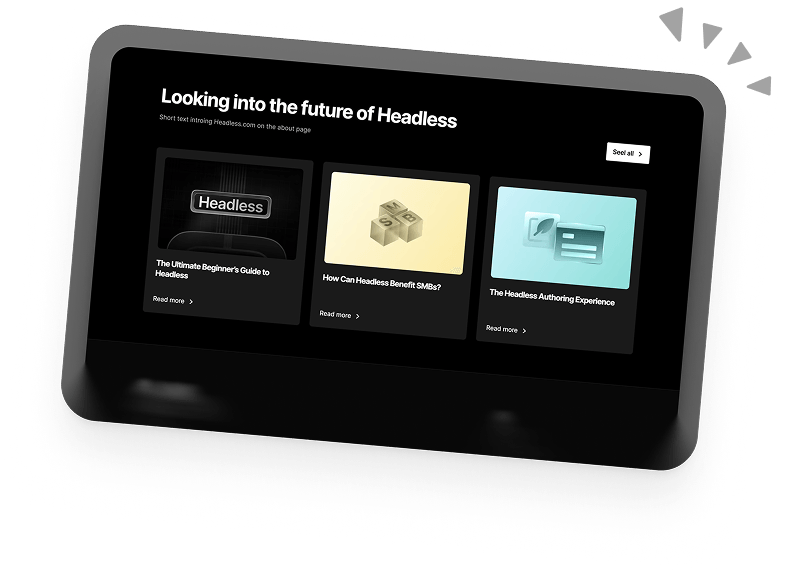Everything You Need To Know About B2B UX Design
B2B UX design is the strategy that defines how professional users interact with your apps, websites or services. This is how you keep prospects on a clearly defined path, help them navigate the information quickly and highlight the key data that can be shared with other stakeholders.
Designing UX (user experience) for B2B projects is far more complicated than B2C UX as it involves a longer and more intricate sales journey that can take months and involves multiple stakeholders. B2B sales also rely more heavily on credibility as buyers are contemplating a large commitment that can affect their entire company.
Why you should care about UX
We’re at a stage where people are spoilt for choices in the digital world. Be it enterprise or consumer-focused, we have hundreds of SaaS products and services trying to solve similar problems. When the market reaches saturation and options lead to analysis paralysis, the only thing that can help you stand out is a superior UX design.
According to Forrester, every dollar spent on improving a brand’s user experience can fetch $100 in return. That’s an ROI of 9,900%! Not too shabby.
User experience (UX) is the core differentiator for many successful brands (think Apple) and it becomes even more important for B2B companies attracting enterprise users.
The good thing is that people today are now convinced of the power of B2B UX design. The bad thing is they don’t know how to differentiate it or go about designing a B2B UX that delights users.
Unique features of B2B UX design
Here are some of the key B2B UX design features you need to know:
- B2B buying decisions are long, arduous and complex. Your strategy must respond to buyers holding different roles in a company because even though their end goal is aligned, they’re influenced by different factors. For example, if you’re selling a sales software, an SDR might love the productivity features while the CFO will look into the ROI.
- B2B UX design relies heavily on information architecture. Owing to product and industry complexities, it’s important to organize and structure content to suit the user’s expertise. Information architecture should consider the flow of the content, how each piece leads to the next and builds on its predecessors to inform and persuade the user.
- User research is the essence of B2B UX design. A lot of good ideas never take off because brands end up alienating users thanks to zero user research. Since B2B sales involve multiple stakeholders, the priority should be to understand their day-to-day challenges, goals, and perspectives.
B2B vs B2C UX: What’s the Difference?
But what actually is B2B UX? How is it different from regular ol’ B2C UX design?
B2C UX design focuses on individual consumers, places more emphasis on emotional triggers, and relies heavily on visual aesthetics. B2X UX revolves around answering users’ immediate needs and there isn’t as much emphasis on long-term trust or partnerships.
B2B customers, on the other hand, do a lot of competitor research and the sales cycle is drawn out. Closing a B2B sale can take months. B2B UX places a lot more emphasis on credibility. A B2B buyer is more likely to be enticed by a set of statistics and a clear layout of information than a flashy logo.
Designing B2B UX: Key steps and Best Practices
If you’re planning to implement a UX design strategy to attract enterprise users, here are a few things you need to remember:
1. Go Animated
Animations hold the user’s attention and help them process information. By integrating animated visuals with videos and high-quality images, you can maintain the user’s interest for longer. And if you’re dealing with complex or technical subject matter, animations will make information more digestible.
2. Implement Design Thinking
Design thinking should be the essential starting point for any UX research but you’d be surprised to know how many companies ignore it even today. Design thinking is a five-step process for making user-focused products.
- Empathise with users’ needs, challenges, and aspirations.
- Define your insights and find the problems that need to be solved.
- Ideate with your team. Get creative and think outside the box for potential solutions.
- Build prototypes and experiment.
- Once you have some prototypes that you like, carry out user testing to refine them based on people’s feedback.
3. Factor in Emotions
The B2B world can often seem like a very “left-side-brain” space, where logic and numbers are the name of the game. But B2B buyers still react emotionally. Purchases are often daunting or scary. After all, closing a sale will have company-wide implications.
Risk aversion is a big challenge in B2B UX designs but it can be solved with qualitative user research, stakeholder interviews, and persona journey maps. Use research data to anticipate cold feet and serve up experiences that inspire confidence and lead users to the next step.
4. Make Responsive Mobile UI
Responsive user interfaces will adapt to the screen-size of any device they are viewed on. As such they are an integral part of omnichannel experiences.
B2B buyers have been consistently evolving towards a more digital sales cycle and this has resulted in mobile experiences becoming a key factor for B2B companies. In fact, according to Think With Google, 40% of B2B revenue is either influenced by, or directly caused by mobile devices.
Additionally, mobile experiences drive customer retention, with over 90% of B2B buyers reporting that they are more likely to make further purchases from a vendor after a superior mobile experience.
5. UX Research is an Ongoing Process
The biggest mistake B2B brands can make today is to implement UX once and forget about it. User expectations and behaviours are changing constantly and it’s important to stay ahead of the competition by constantly interviewing stakeholders and running participatory design programs. Test usability and bring new iterations that improve the enterprise user experience.
The Bottom line
B2B UX research is a crucial part of any brand identity and marketing strategy. By focusing on the user’s mental models instead of the designer’s and constantly implementing feedback, you can create a superior UX to stay ahead of the competition.
Explore More Digital Experience Guides:
Book a 30-min Introduction Call
Let's jump on a quick intro call We'll break down your project, and pinpoint exactly how we can help.



Our clients  Holaa! love working with us see their stories below!
Holaa! love working with us see their stories below!






